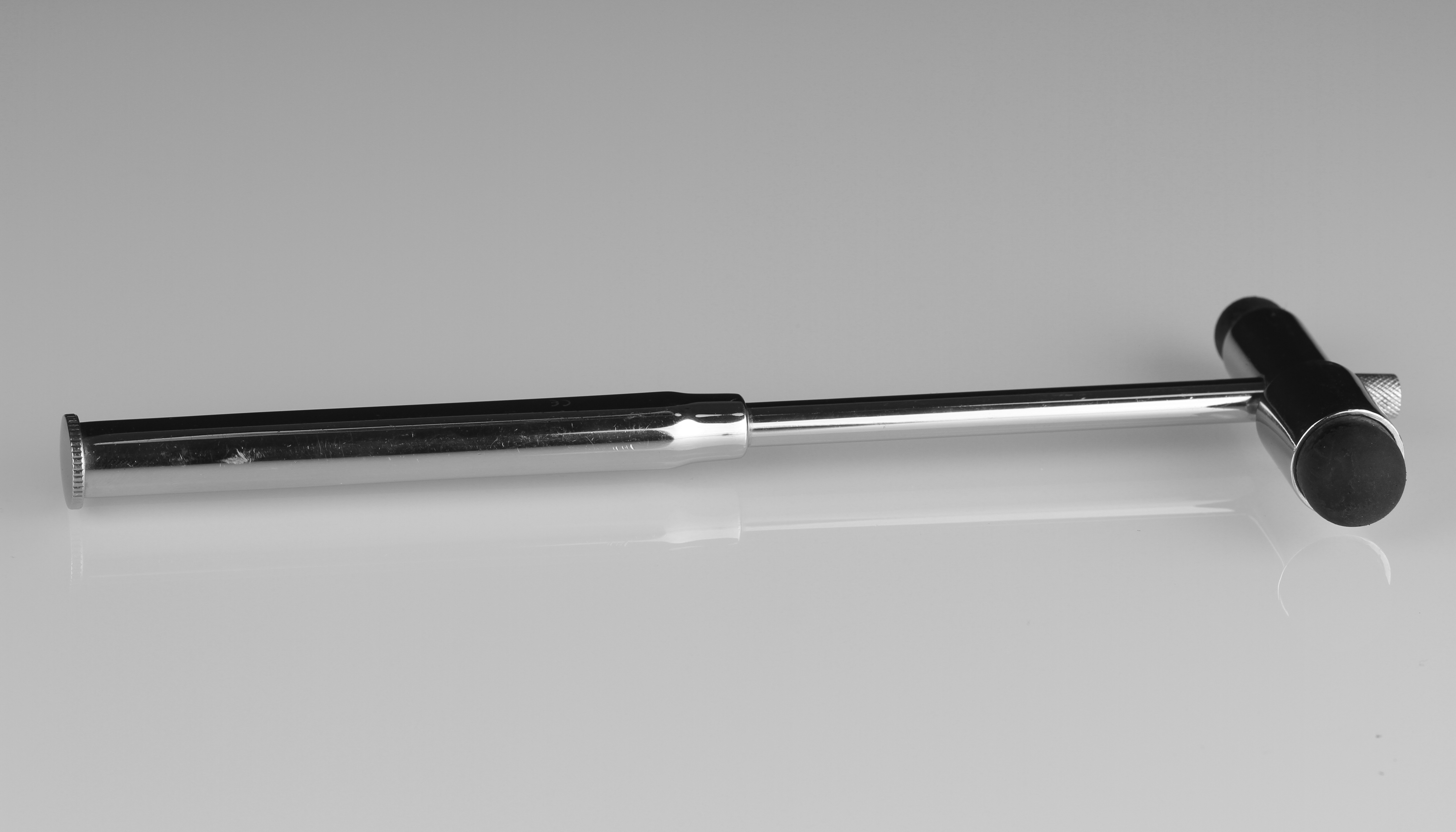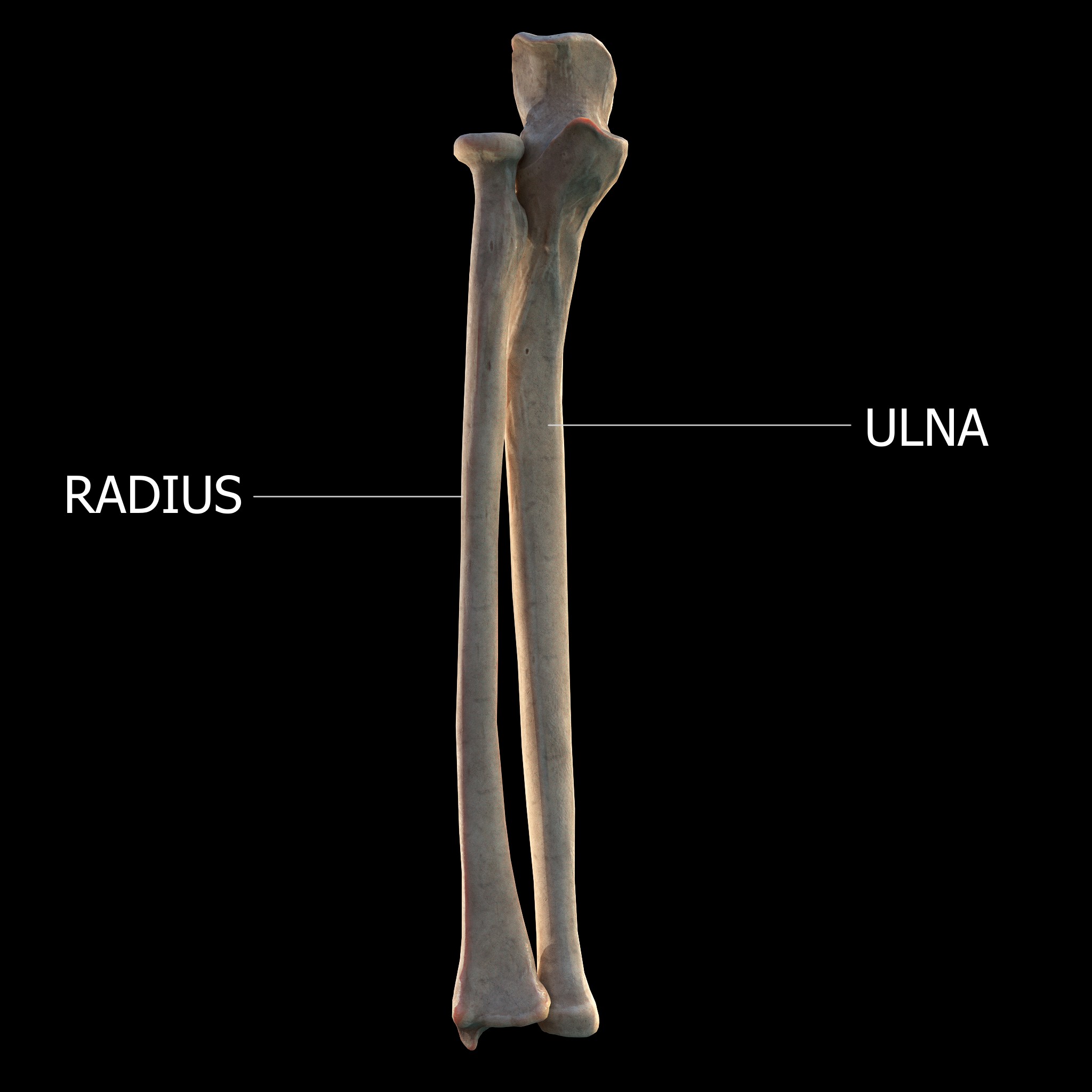|
Biceps Reflex
Biceps reflex is a deep tendon reflex (DTR) test (also known as a muscle-stretch reflex test) that examines the function of the C5 reflex arc and the C6 reflex arc. The test is performed by using a tendon hammer to quickly depress the biceps brachii tendon as it passes through the cubital fossa. Specifically, the test activates the stretch receptors inside the biceps brachii muscle which communicates mainly with the C5 spinal nerve and partially with the C6 spinal nerve to induce a reflex contraction of the biceps muscle and jerk of the forearm. A strong contraction indicates a "brisk" reflex, and a weak or absent reflex is known as "diminished". Brisk or absent reflexes are used as clues to the location of neurological disease. Typically, brisk reflexes are found in lesions of upper motor neurons, and absent or reduced reflexes are found in lower motor neuron lesions. A change in the biceps reflex indicates pathology at the level of musculocutaneous nerve, segment C5/6 or a ... [...More Info...] [...Related Items...] OR: [Wikipedia] [Google] [Baidu] |
Tendon Hammer
A reflex hammer is a medical instrument used by practitioners to test deep tendon reflexes, the best known possibly being the patellar reflex. Testing for reflexes is an important part of the neurological examination, neurological physical examination in order to detect abnormalities in the central nervous system, central or peripheral nervous system, peripheral nervous system. Reflex hammers can also be used for chest percussion (medicine), percussion.Swartz MH. ''Textbook of Physical Diagnosis: History and Examination.'' Third edition. Philadelphia: WB Saunders; 1998 Models of reflex hammer Prior to the development of specialized reflex hammers, hammers specific for percussion of the chest were used to elicit reflexes.Lanska DJ. The history of reflex hammers. ''Neurology''. 1989 Nov;39(11):1542-9. However, this proved to be cumbersome, as the weight of the chest percussion hammer was insufficient to generate an adequate stimulus for a reflex. Starting in the late 19th ... [...More Info...] [...Related Items...] OR: [Wikipedia] [Google] [Baidu] |
Biceps Brachii Muscle
The biceps or biceps brachii (, "two-headed muscle of the arm") is a large muscle that lies on the front of the upper arm between the shoulder and the elbow. Both Muscle head, heads of the muscle arise on the scapula and join to form a single muscle belly which is attached to the upper forearm. While the long head of the biceps crosses both the shoulder and elbow joints, its main function is at the elbow where it flexes and supination, supinates the forearm. Both these movements are used when opening a bottle with a corkscrew: first biceps screws in the cork (supination), then it pulls the cork out (flexion). Structure The biceps is one of three muscles in the Fascial compartments of arm#Anterior compartment, anterior compartment of the upper arm, along with the brachialis muscle and the coracobrachialis muscle, with which the biceps shares a nerve supply. The biceps muscle has two heads, the short head and the long head, distinguished according to their origin at the cor ... [...More Info...] [...Related Items...] OR: [Wikipedia] [Google] [Baidu] |
Cubital Fossa
The cubital fossa, antecubital fossa, chelidon, inside of elbow, or, humorously, wagina, is the area on the anterior side of the upper part between the arm and forearm of a human or other hominid animals. It lies anteriorly to the elbow (antecubital) (Latin ) when in standard anatomical position. The cubital fossa is a triangular area having three borders. Boundaries * superior (proximal) boundary – an imaginary horizontal line connecting the medial epicondyle of the humerus to the lateral epicondyle of the humerus * medial (ulnar) boundary – lateral border of pronator teres muscle originating from the medial epicondyle of the humerus. * lateral (radial) boundary – medial border of brachioradialis muscle originating from the lateral supraepicondylar ridge of the humerus. * apex – it is directed inferiorly, and is formed by the meeting point of the lateral and medial boundaries * superficial boundary (roof) – skin, superficial fascia containing the median cubital vein, ... [...More Info...] [...Related Items...] OR: [Wikipedia] [Google] [Baidu] |
Forearm
The forearm is the region of the upper limb between the elbow and the wrist. The term forearm is used in anatomy to distinguish it from the arm, a word which is used to describe the entire appendage of the upper limb, but which in anatomy, technically, means only the region of the upper arm, whereas the lower "arm" is called the forearm. It is homologous to the region of the leg that lies between the knee and the ankle joints, the crus. The forearm contains two long bones, the radius and the ulna, forming the two radioulnar joints. The interosseous membrane connects these bones. Ultimately, the forearm is covered by skin, the anterior surface usually being less hairy than the posterior surface. The forearm contains many muscles, including the flexors and extensors of the wrist, flexors and extensors of the digits, a flexor of the elbow ( brachioradialis), and pronators and supinators that turn the hand to face down or upwards, respectively. In cross-section, the forearm can ... [...More Info...] [...Related Items...] OR: [Wikipedia] [Google] [Baidu] |
Musculocutaneous Nerve
The musculocutaneous nerve is a Mixed nerve, mixed branch of the lateral cord of the brachial plexus derived from cervical spinal nerves C5-C7. It arises opposite the lower border of the pectoralis minor. It provides motor innervation to the muscles of the anterior compartment of the arm: the Coracobrachialis muscle, coracobrachialis, Biceps brachi, biceps brachii, and Brachialis muscle, brachialis. It provides sensory innervation to the lateral forearm (via its Lateral cutaneous nerve of forearm, terminal branch). It courses through the anterior part of the arm, terminating 2 cm above elbow; after passing the lateral edge of the tendon of Biceps brachi, biceps brachii it is becomes known as the Lateral cutaneous nerve of forearm, lateral cutaneous nerve of the forearm. Structure Course Musculocutaneous nerve arises from the lateral cord of the brachial plexus with root value of C5 to C7 of the spinal cord. It follows the course of the third part of the axillary artery ... [...More Info...] [...Related Items...] OR: [Wikipedia] [Google] [Baidu] |




